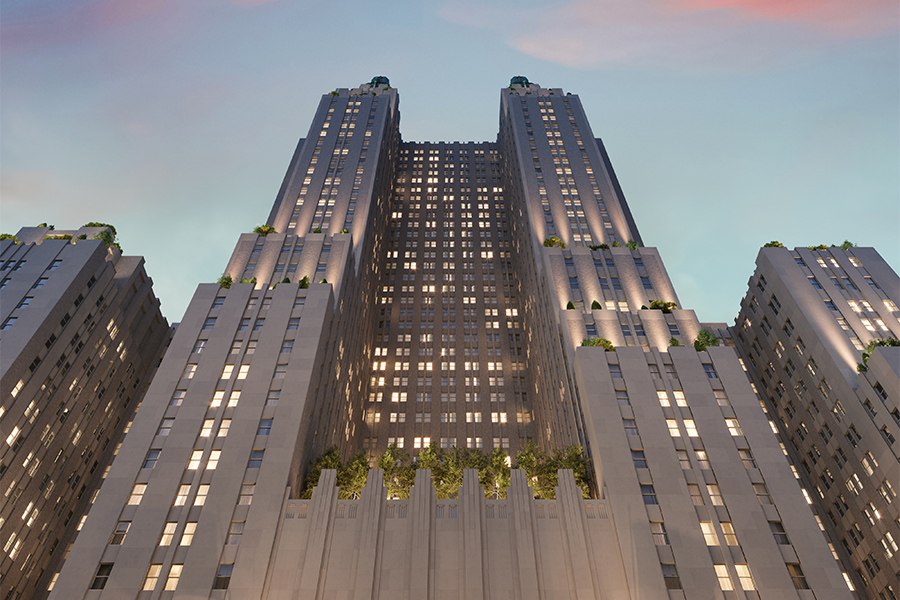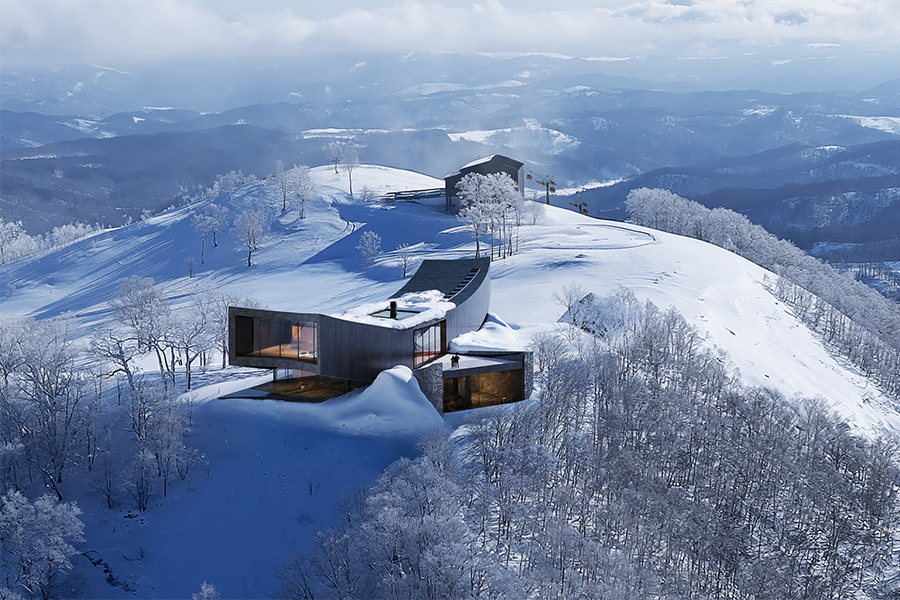The reign of Empress Eugénia de Montijo, Spain’s final Empress consort, came to an end almost a century ago, but her legacy has endured. The former Spanish noblewoman is now the inspiration for the Barceló Emperatriz hotel, located in a historic 19th-century building in Madrid’s central Salamanca neighborhood.
Seville-based interior designer Ernesto de Ceano was commissioned to craft a hotel that was “the palatial aesthetic reinterpretation of the 19th-century palace with all the modernity and freshness of our century.” In order to ensure it would satisfy the needs of the modern traveler, suggestions were pooled from 1,500 future customers to determine what details could make it most unique. Amenities such as a discreet personalized check-in process, flower arrangements, and an overall warm aesthetic stem from the insights gleaned.
The preexisting marquee has been rejuvenated with tinted color-changing glass and a textured ceiling depicting a wave of violets, the empress’ favorite flower. The floral motif honors José Celestino Mutis, the botanist monk whose catalog of new botanical species—the largest ever compiled—is housed in the National Library of Madrid.
Neoclassical touches have been injected into the contemporary redesign to create an atmosphere embodying both elegance and modern comfort. Original moldings and coffers still adorn the ceilings, while abstract sculptures provide a sporadic spark of modernity. Materials such as marble and wood—historically featured in houses of nobility—are used to dress transit and social areas, and large, avant-garde mirrors line the corridors in reference to the grand, theatrical mirrors also typical of the palaces de Ceano sought to honor.
Celestino Mutis is also the namesake of relaxed restaurant Mutis, where the dining room features a floral mural nodding to the lavish gardens often found in historic Spanish palaces.
“We made decorative panels which serve to give magic and color to the décor, with details as seen through a scientific magnifying glass, but full of subtlety and elegance,” de Ceano notes.
Complementing the lobby’s oak paneling are dramatic copper alloy mesh curtains from French architect Dominique Perraud that partition the space and convey both transparent and reflective qualities. A variety of inventive light fixtures perpetuate de Ceano’s repeated use of metals, from subtle finger-like luminaires descending from the lounge ceiling to the lobby’s hand-burnished brass halogen lights. Tables made from handblown glass and metal make bold contemporary statements.
Some of the modern furnishings in both public spaces and 146 guestrooms are dressed in more neutral tones to complement darker details. Velvet and leather upholstery on seating provides a soft complement to the hotel’s more intense hues in the shared environments, while two suites feature large terraces overlooking the city.



